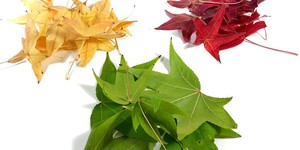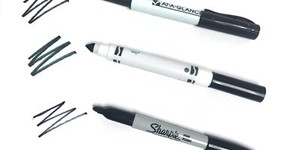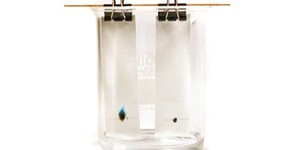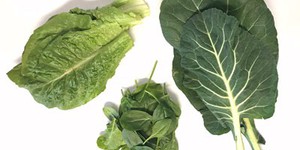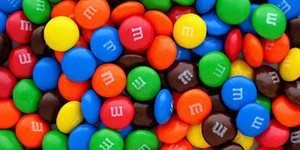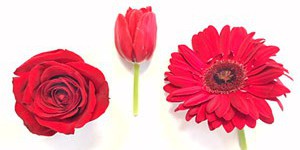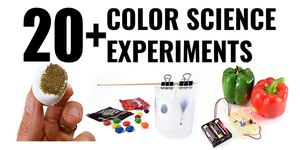Introduction to Paper Chromatography | Theory and Practice
Log In
Want to learn more? Check out these other resources:
STEM Activity
24 reviews
Have you ever wondered why leaves change from green to an amazing array of yellow, orange, and red during the fall? Leaves get their brilliant colors from pigments made up of various color-creating molecules. During the warm, sunny months, plants use their leaves to turn sunlight into food energy, a process called photosynthesis. This primarily uses a pigment that reflects green light, which gives the leaves their characteristic color. In autumn, when colder, shorter days arrive, many kinds of…
Read more
STEM Activity
16 reviews
Do you have a favorite M&Ms or Skittle candy color? Have you ever wondered what dyes are used to make that particular color? Some candies are the color they are because of a single food coloring, while others may use a couple different dyes to create just the right appearance. In this activity you’ll get to do some scientific detective work at home to investigate which colored M&M’s candies use which dyes. If you have some M&M’s leftover…
Read more
Project Resource
Paper chromatography is an inexpensive method for analyzing some types of chemical mixtures. A
Candy Chromatography Science Kit
is available to do several simple and fun paper chromatography experiments. You can learn more about paper chromatography in the video below. The video gives an overview of what paper chromatography is, shows how it is done, explains the separation processes involved, and also provides tips and tricks for troubleshooting your experiment.
If you would like to…
Read more
Have you ever looked at sunlight through a prism? If so, you know that the prism can separate the sunlight into many different colors of light — a rainbow. Like sunlight, chemical mixtures can also be broken into their component parts. One way of doing this is a simple technique called paper chromatography. What do you think you will see if you use paper chromatography to look at the components of black ink? Is black ink just black? Find out for yourself!
Read more
Did you know that mixtures can be unmixed? Chromatography is an analytical technique in chemistry to separate mixtures and identify each of its individual compounds. In this project, you will separate ink dyes found in different markers using a strip of paper, chalk and different liquids. By comparing different chromatography substrates and solvents, you will learn how different attractive forces between substances can affect the separation of a mixture into its individual components.
Read more
Do you like to analyze stuff and finding out what it is made of? An analytical chemistry method, called chromatography, allows you to separate mixtures of compounds and to identify each individual compound within the mixture. Chromatography is used by many scientists, for example food scientists, forensic scientists, or organic scientists to analyze all kinds of mixtures such as food, blood, or medicine. In this project, you will be using paper chromatography to analyze the pigments from…
Read more
Do you ever wonder how markers are made? Where do all of those colors come from? Many of the colorful dyes we use come from plants. Could you create vibrant colored natural dyes? Could you turn these dyes into art supplies? You can! In this science project, become a scientist and engineer and make your own marker using homemade plant dye!
Read more
Everyone loves the beautiful colors of fall, but where do they come from and how does the change in colors happen? In this project, you will uncover the hidden colors of fall by separating plant pigments with paper chromatography. What colors will you see?
Read more
Quick, what is your favorite color of M&Ms® candy? Do you want to know what dyes were used to make that color? Check out this science project to find out how you can do some scientific detective work to find out for yourself.
Read more
Are all reds the same? Find out in this science fair project! Investigate if the pigments in one type of red flower are different from those in another type of red flower. Flowers contain an assortment of amazing chemicals that produce color. In this plant biology project, you will analyze the colored pigments in different plants' red flower petals using paper chromatography, and compare the pigments in the different flowers.
Read more
Blog Post
Use these free STEM lessons and activities to experiment with paper chromatography.
Experiment with Paper Chromatography
Chromatography is a technique used to separate a mixture or solution into its individual components. There are several different types of chromatography, including thin-layer, column, and paper chromatography. Paper chromatography uses materials that make it accessible for chemistry exploration at the K-12 level.
Paper…
Read more
Blog Post
Can science make you a better artist or help you create your next masterpiece? Put creative science on display with STEM experiments about art!
Art & STEM!
What does painting a picture, making a sculpture, or creating a mobile have to do with science? A lot! Science explains how colors mix and how different types of paint work on various papers and surfaces. Science explains how art materials are developed with specific properties, for example, how…
Read more
Blog Post
Dig into the science of color with colorful, color-changing, eye-catching science experiments!
23 Color Science Experiments and STEM Activities for Science Class and Science Fair
Some experiments are "colorful" because they use colored water, paints, or other materials as part of the demonstration of science concepts. The collection of student science fair projects and STEM learning resources highlighted here is "colorful" in a different way. These…
Read more
Explore Our Science Videos
The Impossible Arrow Illusion
Is the Egg Raw or Cooked? STEM activity
Build a Mini Trebuchet



